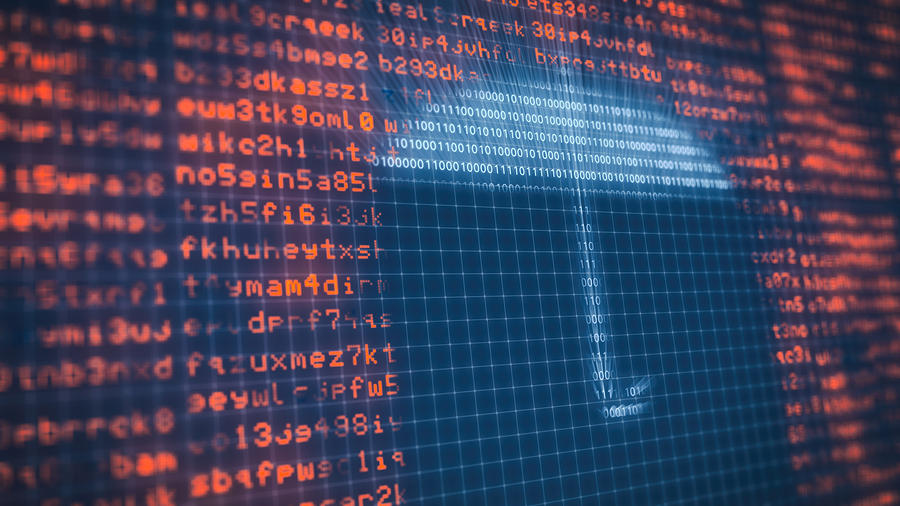The Importance of Effective Data Damage Practices in Safeguarding Sensitive Information and Ensuring Computer Safety And Security
In an era where information breaches are increasingly typical, the value of efficient information damage methods can not be overemphasized. Carrying out durable information destruction approaches not just minimizes these dangers however likewise straightens with lawful compliance requirements, ensuring that organizations promote their credibility and foster customer trust fund.
Comprehending Data Devastation
Understanding data damage is important in today's electronic landscape, where delicate information can conveniently be jeopardized. Efficient data destruction involves not merely making certain yet removing data that data is irretrievable with extensive techniques. This process is important for organizations that take care of confidential client information, intellectual building, or interior files, as any kind of violation can bring about extreme economic and reputational effects.
Information damage encompasses different techniques, consisting of shredding physical media, degaussing magnetic storage space tools, and employing software-based solutions that overwrite information multiple times. Each technique serves a certain function and needs to line up with the sensitivity of the information being taken care of. For example, physical devastation is often preferred for disk drives consisting of very private data, while software program approaches may suffice for much less delicate information.
Additionally, sticking to market standards and regulations, such as the General Information Protection Regulation (GDPR) or the Wellness Insurance Transportability and Accountability Act (HIPAA), is crucial for compliance and to alleviate legal risks. Organizations must establish a robust information devastation plan, train staff members on finest practices, and consistently audit their procedures to guarantee that all sensitive details is gotten rid of safely and successfully.
Risks of Inadequate Practices
Inadequate data devastation practices expose companies to significant threats that can have far-reaching repercussions. When sensitive information is not appropriately dealt with, it continues to be vulnerable to unapproved accessibility, which can result in information violations and identification burglary. Such events not just jeopardize the security of individuals however likewise tarnish the organization's credibility, leading to a loss of customer trust and potential monetary consequences.
Furthermore, regulatory conformity is progressively rigorous in many industries. Failure to follow information destruction laws can lead to substantial fines and legal actions versus organizations. These fines can draw away and stress financial resources interest from core business procedures.
On top of that, the misuse of residual information can result in copyright burglary or corporate espionage, jeopardizing affordable benefits (data destruction). The impact of insufficient data damage prolongs beyond prompt monetary losses; it can also lead to long-lasting damage to brand stability and market setting

Organizations should acknowledge that information protection is not exclusively about protecting against breaches; it also encompasses the responsible administration of data throughout its lifecycle. Disregarding efficient information destruction procedures can have disastrous ramifications, highlighting the requirement for durable procedures to reduce these dangers.
Best Practices for Data Devastation
Executing reliable information damage methods is essential for guarding sensitive info and keeping conformity with regulatory requirements. Organizations must embrace a multi-faceted approach to make sure that information is irretrievable, consequently avoiding unauthorized accessibility and potential violations.
First, data ought to be classified based upon level of sensitivity, allowing organizations to apply suitable damage approaches customized to the degree of danger. For digital information, using software-based data-wiping tools that comply with industry criteria can efficiently overwrite existing data. Physical devastation techniques, such as shredding or degaussing, are vital for devices that store sensitive information, ensuring full obliteration.
Developing a clear information retention plan is vital, outlining you could check here for how long various types of info need to be retained before devastation. Regular audits of information storage space systems are additionally needed to recognize outdated or unneeded information requiring removal.
Furthermore, training employees on the value of data damage and the details methods to adhere to fosters a culture of protection within the company. Ultimately, maintaining documents of data damage refines provides liability and sustains conformity with internal plans and exterior guidelines. By adhering to these finest methods, organizations can substantially mitigate the risks associated with information exposure.
Legal and Conformity Considerations

Failure to abide with these regulations can lead to severe charges, including significant fines and reputational damage. Organizations must execute a robust data destruction plan that lines up with these lawful frameworks and provides clear guidelines on the proper techniques of data disposal, whether physical shredding or digital cleaning.
Additionally, preserving paperwork of data devastation activities is crucial for demonstrating compliance during audits or inspections. By prioritizing legal and compliance considerations, companies can enhance their information safety stance and foster trust fund with clients and stakeholders, inevitably adding to a more protected data administration setting.
Advantages of Effective Information Devastation
Efficient information damage practices prolong past plain conformity; they offer significant advantages to companies that prioritize them. By ensuring that delicate information is irretrievably damaged, companies minimize the risk of data breaches and the potential financial repercussions associated with them. This proactive approach not just safeguards versus unauthorized accessibility yet also enhances the total credibility of the company in the eyes of customers and stakeholders.
Applying durable data destruction methods, such as physical devastation of storage space gadgets or sophisticated data wiping strategies, adds to the conditioning of an organization's cybersecurity stance. data destruction. It lowers the chance of intellectual home theft and secures exclusive details, therefore keeping an one-upmanship out there

Final Thought
Finally, reliable information devastation practices are necessary for guarding sensitive info and boosting overall computer protection. By implementing extensive approaches such as degaussing, shredding, and software application overwriting, organizations can reduce the dangers related to unapproved accessibility and information violations. Adherence to regulatory standards, consisting of GDPR and HIPAA, further reinforces conformity and shields versus lawful effects. Inevitably, a dedication to durable information devastation strategies fosters a culture of responsibility, thus strengthening an organization's cybersecurity posture and maintaining client trust.

Comments on “How to Incorporate Data Destruction Techniques into Your Cyber Security Approach”